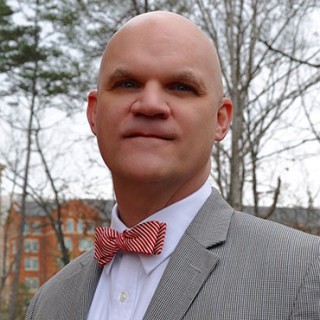Change leadership: What makes higher ed different?
.jpg?itok=BwWUn1Ia)
Key takeaways
- Change may be more incremental—or slower—in higher ed
- Higher ed’s organizational structure may make change more challenging
- Higher education’s multiple stakeholders and other ambiguities affect change dynamics
In part one of this blog series, we examined why higher education needs change leadership, and in part two we looked at a few change leadership models.
In part three, we’ll be delving into a fundamentally important question: What makes change leadership for higher education different from the corporate world?
It has always been done that way
To begin, higher education differs significantly from the corporate world when it comes to the speed of change (or lack thereof). Corporations are spurred into action through competition, and can institute sweeping changes within the organizational structure fairly quickly to respond to these competitive pressures. Make no mistake, higher education faces serious competitive pressures as well (from other institutions, student debt, shifting cultural norms, and so on), but a higher education institution does not typically shift focus or rapidly make a wholesale change in response.
The point is, corporations have the flexibility to respond to outside pressures much more quickly than higher education institutions. The reason for that is twofold. The first is that many higher education employees, by their very nature, are averse to change. Part of that is because colleges and universities are, by and large, older institutions with a culture built on tradition, stability, and dependability. That’s certainly not a bad thing. But that can create a sense among faculty, staff, and other employees that too much change, too quickly, is an undesirable or risky goal.
If you’ve worked in higher ed for any length of time, you’ve probably heard some version of the following uttered as a defense for why any new approach or concept will be rejected:
- People don’t see the need to change.
- We’ve never done it like that before.
- We’re getting bogged down in analysis.
- We can’t overcome old patterns of behavior.
- People aren’t motivated to make the change.
- I’ll change later, when I’m not so busy.
- It isn’t working. It’ll never work.
- I know what I should be doing, but I’m not doing it.
- But you don’t know my people. They absolutely hate change.
- We were excited at first, but then we lost momentum.
- It’s just too much.
- We all agree, but nothing’s happening.
Granted, you may encounter many of these excuses in the corporate world as well, but within higher ed, these defensive reactions largely come from the idea that the institution is too conservative, too tradition-bound, or too bureaucratic to make any change. Within higher education, there simply may not be a burning desire to make a change. In the corporate world, a company must evolve and respond to the marketplace, or it dies. That’s usually not the case in higher ed, where often the prevailing attitude is, “If we just keep doing what we’re doing, we’ll be fine. It seems to have been a winning formula since the institution was founded in 1840.” And this approach has, for the most part, served higher ed well in the past. Often very capable higher education leaders are rewarded for maintaining the current course and doing things well, rather than taking risks and seeking innovation.
The problem here is that, sometimes, the institution’s culture can have a chilling effect on change. That’s where an effective change leadership program can make a difference—in helping the institution’s employees recognize that change is not a threat to the institution, its mission, or its traditions, but rather an opportunity to make things better—and, by extension, improve the educational experience of students.
The power dynamics of higher ed
The second reason why higher ed isn’t as adept with and responsive to change is because of its organizational structure. Any hierarchical organization—the military, for example—clearly defines the chain of command and delineates who has power, and who does not. When an order comes down from on-high, those tasked with carrying it out must do so (and quickly), or suffer consequences. Many corporations, to one degree or another, are organized in this manner. When the CEO asks for something, it gets done. Most people who work within that hierarchy understand that dynamic. They understand the power they have, and they understand the power they don't have.
Now, on paper, a college or university may appear organized in a similar manner, but in practice, that’s usually not the case. Colleges and universities may be very siloed or decentralized—and departments within the institution may operate fairly independently of each other, so when a change begins to take shape, those departments may resist, since they don’t feel that the change is “for them.”
Also consider one of the principle aspects of higher ed that separates it from the corporate world: faculty. To a certain degree, the faculty at any institution will have autonomy and the power to shape the direction of the fundamental process of education. And so too do the students—particularly today, having become regarded as “consumers” in our current enrollment landscape. The upshot of this is that a higher ed institution isn’t really organized in a top-down fashion like a corporation might be—rather, colleges and universities are structured more like government systems, with checks and balances and various competing spheres of influence in which one group may wield more power than another.
In addition, employees in higher education may also be resistant change because they feel that any change coming down the pike won’t matter, won’t really be implemented, or won’t go into effect any time soon. Part of this comes from a sense of powerlessness that may pervade campus culture.
For example, think of the typical college or university committee. A committee feels very democratic. It feels very participatory. It feels very populist. But oftentimes, committee members may feel that it's not clear if the committee can really make a change, really make a decision. And then what's going to happen after the committee makes a decision or recommendation? Once the recommendation heads up to the upper administration, sometimes it goes nowhere—and that can lead campus employees to feel defeated, pessimistic, or resistant to the idea of any kind change.
The pivotal role of ambiguity
In higher education, there’s also an overriding theme that complicates matters when it comes to implementing change: ambiguity.
Corporate culture rewards—and expects—innovation and entrepreneurship. Apple is constantly pushing for new and better products, and the success or failure of everyone, from the CEO down to the engineers, depends on that. Higher ed doesn’t operate that way. It exists in an ambiguous state, where measures of success and progress may be more difficult to assess. Some of those metrics may be enrollment or graduation rates, but that’s entirely different from iPhones.
This kind of ambiguity can mean that fostering change starts from a completely different position. For Apple, selling more iPhones can start from a handful positions—innovate a better product, improve marketing, lower price points, and so on. Higher education is not so cut-and-dried. Students—and the mission of educating them—are not developed like a next-generation product. Students, of course, are not just the product of higher ed, but a complex partner and customer.
Therefore, higher ed institutions define success more ambiguously, and that can mean university and college employees might feel less motivated to strive for change. In other words, if I’m not going to see concrete numbers in three weeks, why make any kind of change?
And that brings up another salient point. It often seems that higher education moves at a much slower pace than the corporate culture. When change does occur, it tends to happen gradually, over a long period of time. That contributes to higher ed’s culture of stability. Institutions may not think they have to make a dramatic change to do better.
One size does not fit all
It’s also important to note here that your mileage may vary: not all institutions are the same. The culture and prevailing attitudes at a two-year institution may be vastly different from a four-year, private Ivy League school. Community colleges may be more responsive to outside forces (such as efforts to increase workforce readiness) and will embrace change more readily. And that feeds back into a sense of ambiguity for institutions. There’s no blueprint for the “right” way to educate students or increase graduation rates that applies to every institution. Thus, sometimes higher ed employees may feel as if they’re operating in a bubble, and introducing change into that dynamic can be daunting.
As we’ve said before, change is an opportunity. But it’s crucial to understand the unique drivers and cultural attitudes that make higher ed distinct from the corporate world. Understanding what makes higher education tick—and what makes it different—vastly improves the likelihood that any change will be successful.
This is the third blog of a four-part series. Part four, will discuss the techniques and strategies for communicating change.




